- Home
- New Kyurizukai
- Quantum Spin Physics
from Keio's Faculty of Science and Technology
Quantum Spin Physics
from Keio's Faculty of Science and Technology
The physical science foundation
for next-generation electronics
Obsessively fascinated by the excitement of cutting-edge research work, I’ve charged forward with my researcher’s career.
My college life was a truly rewarding one as I could devote myself to research under Prof. Eiji Saito, who made a name for himself for the discovery of “inverse spin Hall effect” – phenomena indispensable to the development of spintronics – and study together with exceptionally bright lab mates. The greatest factor that supported my research life as a student was discussions with Prof. Saito and the fellow lab mates. This experience still remains a pillar of critical importance for ongoing academic pursuit.
Kazuya Ando
Dr. Ando’s specialty is condensed matter physics centering on spintronics. He graduated from Keio University Department of Applied Physics and PhysicoInformatics, Faculty of Science and Technology in 2007, completed the master’s course at Keio University Graduate School of Science and Technology (School of Fundamental Science and Technology) in 2008 (prior termination), then completed the doctoral course at the same graduate school in 2010 (prior termination). Doctor of Engineering. In 2010 he became Assistant Prof. for the Institute of Materials Research, Tohoku University. In 2013 he served as Assistant Prof. for Keio University Department of Applied Physics and Physico-Informatics, Faculty of Science and Technology and was promoted in 2015 to the current position as Associate Prof. there. From 2013 on he concurrently serves as researcher for the Japan Science and Technology Agency’s PRESTO project.
The Research
Associate Professor Kazuya Ando is featured in this issue, whose field of research focuses on spin current of electrons.
Elucidation of spin current caused by properties of the electron as a magnet
Pioneering the next generation of electronics by establishing the foundation of physics that controls spin current
Spintronics is a field of study that investigates into yet unexplored physical phenomena resulting from “spin” – manifestations of quantum-mechanical freedom peculiar to the electron. Highly motivated to make to most of his study for the development of spintronics, Associate Professor Kazuya Ando is devoted to theoretically unraveling spin current which is a focus of attention due to its excellent properties: being convertible to electric current and able to transmit information virtually without energy loss.
Spin is an expression of properties of the electron as a magnet
Dr. Ando’s research focus is on physical phenomena caused by what is known as “spin” resulting from freedom peculiar to the electron, which is a field of spintronics.
“While ‘spin’ is often translated as ‘rotation,’ it rather refers to the working of a magnet. The electron has an electrical charge; so does it have the properties of a magnet. In the world of quantum, however, spin can take only two directions – upward and downward. Take iron, for example. Iron is ferromagnetic because, with iron the quantities of electrons that have upward and downward spins differ, that is to say, in a state of imbalance. When it comes to gold and silver, meanwhile, they contain electrons with equal quantities of spin whether upward or downward, which keeps these metals from being attracted to a magnet,” explains Dr. Ando.
It is usually the case that when a voltage is applied to a material from outside, both an electron with an upward spin and that with a downward spin move in the same direction. This causes the flow of the spins to be offset as a whole and allows only electrical charges to move, generating an electrical current as a result. Conversely, moving two electrons in opposite directions nullifies the flow of electrical charges, thereby allowing only the spin to flow. This flow of spin is what we call spin current.
Of all major achievements in the study of spin current, perhaps the most important is “Giant Magnetoresistance (GMR) Effect” discovered in the 1980s by the 2007 Nobel Prize winners Albert Fert and Peter Grünberg. The GMR effect is observed as a significant change in the electrical resistance that occurs in a thinfilm structure composed of ferromagnetic and non-magnetic multilayers, which is induced by spin current. This discovery helped drastically enhance memory capacities of hard disks and other storage media. This phenomenon usually comes out attending on spin current (spin polarized current); from around 2000, it became possible to create spin-only current, which has spurred research endeavors on spin current not accompanied by the flow of electrical charges.”
The greatest advantage of spin current lies in that it is free from energy loss due to heat generated by electrical current. This means you can transmit quantum information virtually without energy loss if you only can control the spin current well instead of controlling electron’s electrical charges. This is exactly why expectations are high for spintronics as a key technology for next-generation electronics.
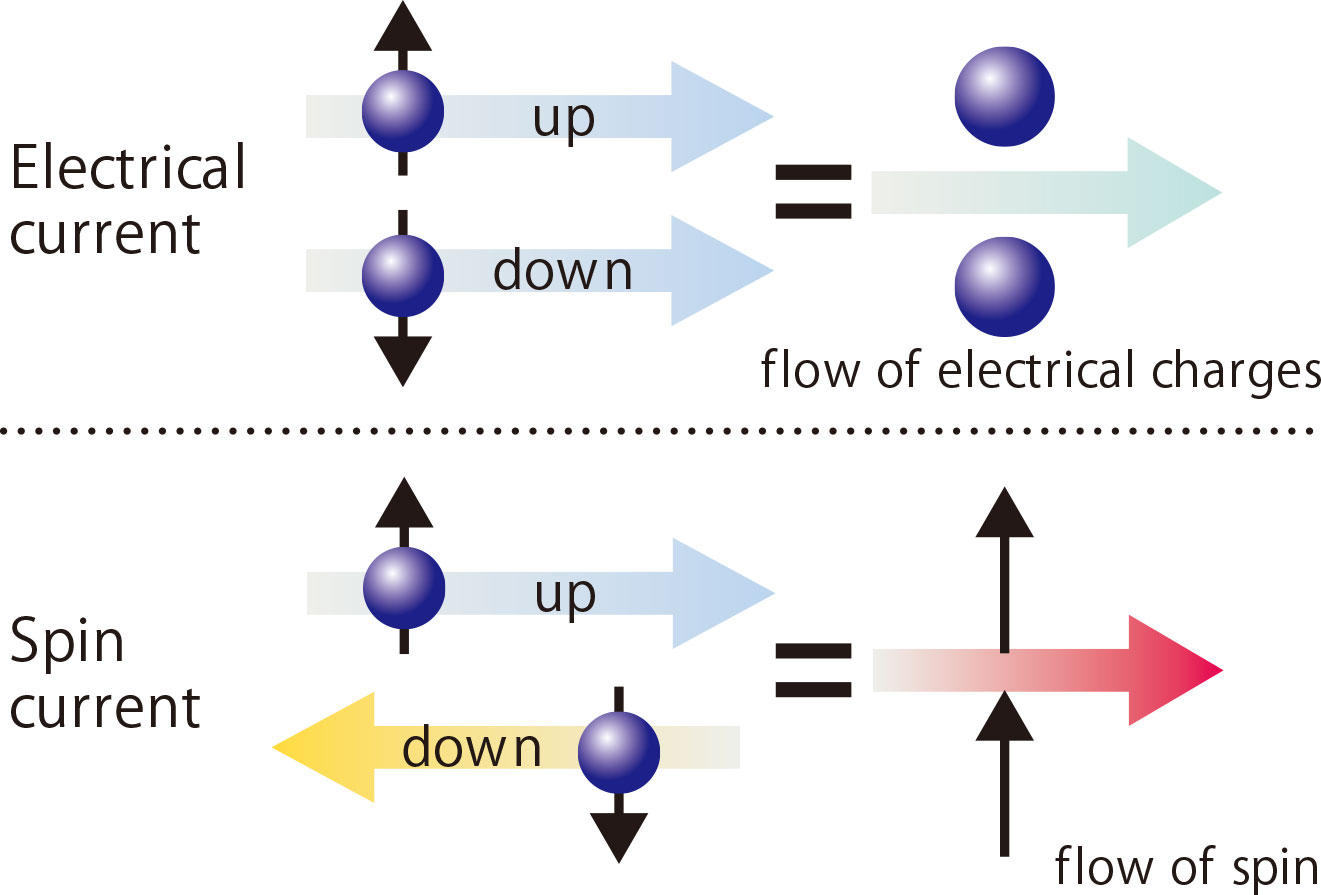
Fig. 1 The flow of “spin”
When an electron with an upward spin and that with a downward spin are moving in the same direction, a flow of electrical charges is generated – we call it an electrical current. On the other hand, if these two types of electron are moving in opposite directions, a flow of spin is created. Such a flow of electron spin is called spin current.
Spin current and electrical current are convertible to each other
Of many studies on spin current, Dr. Ando tackles the elucidation of fundamental physical phenomena, which is useful for controlling spin current. “One example is a phenomenon called “inverse spin Hall effect.” In this phenomenon, a voltage can be observed in the direction crossing the spin current at right angles when the spin current is flowing. It was first observed with metallic materials from 2006 to 2007.
This phenomenon can be understood based on the special theory of relativity presented by Albert Einstein. His special theory of relativity explains wondrous phenomena, such as “The length of a moving body appears to be shrunk” and “Time of a moving clock appears to be passing slowly.” Using this theory, we can convert part of the spin to electric polarization. Such relativistic phenomena can be observed in materials – that’s the inverse spin Hall effect. To put it simply, a voltage appears as two electrons, each with an opposite-direction spin, are scattered in the same direction and electrons accumulate.
“Similar phenomenon can happen the other way around. In other words, applying an electrical current causes two electrons to be scattered in opposite directions, thereby generating a spin current in the vertical direction. This phenomenon – the spin Hall effect – was experimentally confirmed by several groups almost simultaneously in 2004.”
Spin current studies began to accelerate at an exceptional pace as theoretical attempts were made to unravel these phenomena and thereby made it possible to create spin currents without using magnetic bodies and to convert spin current to electrical current and vice versa. Based on such knowledge, Dr. Ando is meeting ever-progressing challenges of research themes, such as trying to enhance the conversion efficiency between spin current and electrical current (the current rate being only several percent) and to control relativistic effects taking place on the interface between materials.
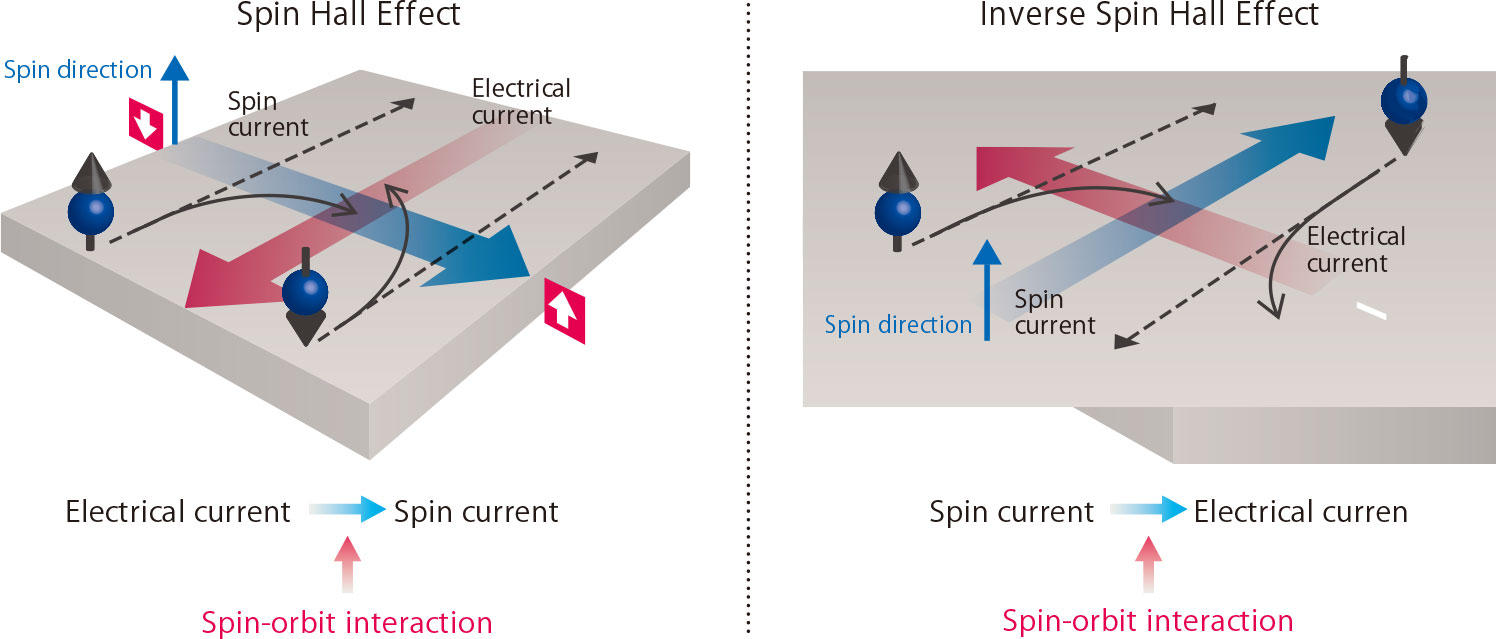
Fig. 2 Spin Hall effect and Inverse spin Hall effect
Due to relativistic effects taking place inside a material, movement of electrons involves a deviation that is subject to spin direction. The relativistic effect that occurs when an electric current is applied to the material refers to the spin Hall effect, while the phenomenon of an electrical current being produced from spin current refers to the inverse spin Hall effect.
Spin currents in various types of material
Of a variety of research themes undertaken by Dr. Ando, worthy of special mention here is the study on a kind of particle called the “magnon” resulting from spin fluctuation.
He remarks, “The fact is that spin current can be generated even when an electrical charge is not flowing. To put it another way, spin current flows even within an insulator. What is responsible for the spin current in the insulator is magnons, or spin fluctuation you might say. With quantum mechanics, it is possible to regard fluctuation (wave) as particles. As such, magnons can be viewed as behavior of particles in a spin wave. Thanks to this characteristic, magnons enable information to be transmitted in insulators.”
With conventional information processing based on electrical current, electrically conductive materials, like semiconductors, were needed. But if information processing becomes possible using insulators, the scope of materials that can be used is sure to expand significantly.
Dr. Ando continues: “Furthermore, in insulators, spin current can travel a tremendously long distance of several millimeters whereas in electrically conductive materials it disappears after being transmitted only for several nanometers to several hundred nanometers. Here I’d like to call your attention to another point. On an interface between a metallic material and an insulator, the spin current carrier is converted from conductive electrons to magnons. I recently found that at this point of conversion, the lifetime of magnons holds the key to conversion ef f icienc y.” This g roundbre a k ing discovery was published on the December 2014 issue of “Nature Communications.”
What’s more, Dr. Ando attacks the elucidation of nonlinear physics-related phenomena caused by magnon’s splitting/ coupling.
“It abruptly occurs that a magnon is split into two or two magnons are coupled; this property differentiates magnons from electrons. I’m attempting to externally control such magnon behaviors and unravel its impact on spintronic phenomena. Once the scope of materials that can be used for spintronics is expanded and we become able to control spin current at our fingertips, it will lead us to greater opportunities for application. The ultimate goal of my studies is to unravel fundamental physics needed by spintronics.”
Recently he is also engaged in the study of spin current in organic matters. While efficiency of conversion from electrical current to spin current is relatively low with organic matter, its spin current life is relatively longer – in the microsecond order. Encouraged by this fact, Dr. Ando talks about his eagerness to explore the possibility of organic matters as new materials for spintronics.
“Studies on magnetism have been a field of strength for Japan. And as a key technology for next-generation memories, spintronics is a hot area in which we have so many competitors including businesses. Despite such a competitive environment, I’m highly motivated to open up unexplored fields on my own.
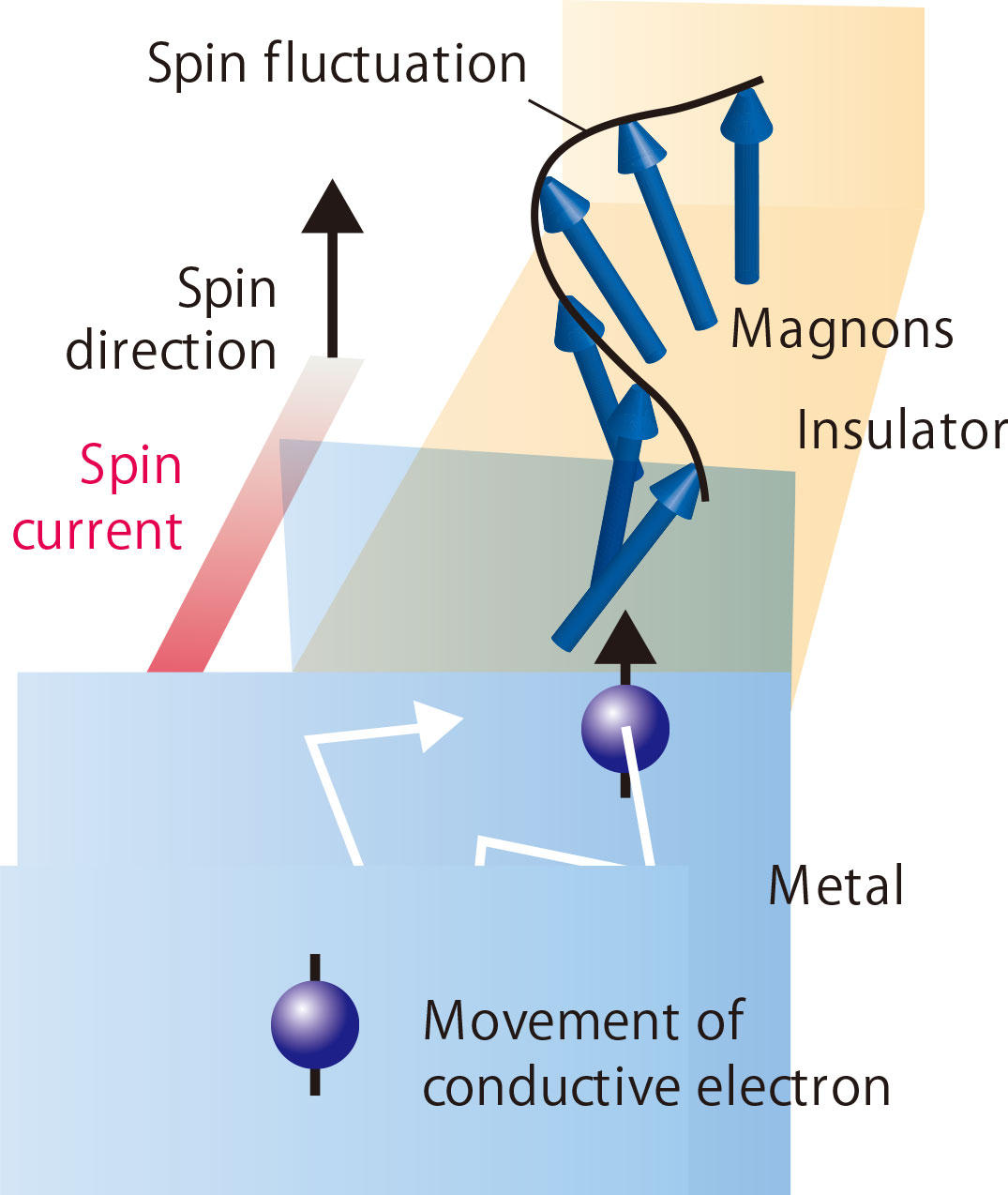
Fig. 3 Conversion of nonlinear angular momentum in solid bodies
On the interface between a metallic material and an insulator, delivery of spin takes place between conductive electrons and magnons. This process enables the spin current carrier particles to be converted on the interface – from magnons to conductive electrons.
Interview
Associate Professor Kazuya Ando
As a schoolboy good at scientific subjects, I'd yearned for a researcher's career.
What was your childhood like?
I was born and raised in Inazawa City, Aichi Prefecture – just about halfway between Nagoya and Gifu cities. I spent years through the high school days in this commuter town about a ten-minute train ride from Nagoya.
Although none of my family members or relatives had good knowledge of or interest in scientific things, they say I was an exception. In fact, as a small boy I was crazy about things like illustrated encyclopedias. I also remember I was an enthusiastic collector of minicar models. As my parents once told me, I was so fond of vehicles that I could identify the type of every single car that passed before my eyes. But I must admit that now I don’t have any car of my own . . . (Laughter). Yes, I seemed to be a type of boy who became absorbed in anything that captured my interest.
Since elementary school days, I had been good at scientific subjects. So when it came to summer holiday homework, one of my classmates and I tried role sharing – I was responsible for science and math while he took charge of other subjects. That said, I didn’t like experiments. It seems I rather liked brain-oriented study.
By the way, I chose to study at local public schools, from elementary through high school that could be reached on foot or by bicycle from home because I didn’t like to go to school by train. In fact, most of the good private schools were located in the Nagoya area, which was very likely to get me involved in the morning commuter rush that I hated. Likewise, when I entered Keio University, I chose to live in the Hiyoshi area from which I could walk to the campus.
Did you join any sports?
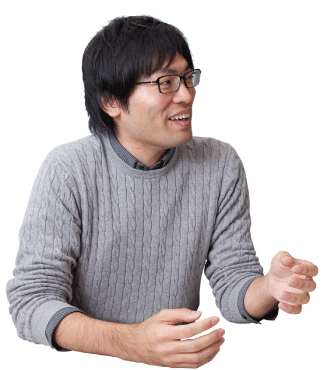
Yes. I enjoyed soccer in my elementary school days and belonged to the volleyball club as a junior high school student. But I didn’t join any sports club during my senior high school days because the teacher who oversaw the junior high volleyball club was so stern with us students, which disheartened me in taking up school club sports anymore. Anyway, I couldn’t afford to enjoy club sports at my high school you might say because “just study hard!” was the top priority and watchword at most public high schools in Aichi Prefecture. That said, the subjects I knuckled down to remained unchanged – mathematics and physics. To look back at those days, it seems I began to have a vague yearning for a researcher’s career around then. My natural course of life should have been to enter Nagoya University located in my home area. But I dared to choose Keio University Faculty of Science and Technology because I wanted to live my own life away from my parents. In the second year at Keio, I advanced to the Department of Applied Physics and Physico-Informatics. Back in those days, I must admit, I had little idea of exactly what area of study I would like to engage in. Anyway, I chose this department because, compared with the Department of Physics, it appeared to offer more options for my future, where I might possibly do something great. The department’s harmonious atmosphere also became a decisive factor that drove me to study there.
Producing tangible achievements in the new research field and
opening up a researcher's career.
Did you decide your course of research when assigned to your lab?
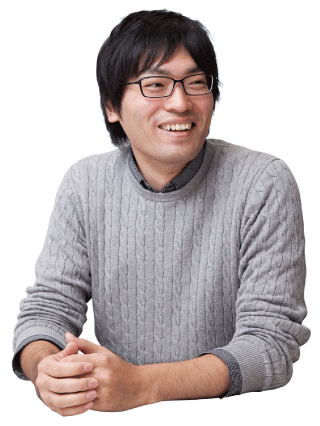
To tell the truth, at the time I felt a passion for physics rising in myself again, so I joined the Department of Physics Prof. Tetsuya Sato’s lab. In April when I became a senior, however, it happened that Prof. Saito, who had been a research associate at the Department of Physics, was promoted to Assistant Professor of the Department of Applied Physics and Physico-Informatics and set up his own lab. With this event as an opportunity, I was allowed to join the new lab as a first-generation student. Immediately before establishing his lab, Prof. Saito discovered the “inverse spin Hall effect” phenomena; the new research theme “spin current” intrigued me very much. Furthermore, the following year 2007 saw two spintronics researchers become Nobel Prize laureates. All in all, these events made me go into this field of study with heart and soul.
What first overwhelmed me upon joining the lab was Prof. Saito’s exceptional enthusiasm toward, and a profound understanding of, physics. When I raised a question to him, for instance, he instantly responded with an answer supported by the most advanced and profound knowledge, which almost made me think he had been thinking about that particular subject up to a minute before. I was truly impressed by Prof. Saito’s attitude. Indeed, he always remained in the vanguard of research and spoke with his own words; his understanding was deep and thorough, not superficial at all.
Members of our lab included: my seniors who followed Dr. Saito and transferred to our lab, such as Mr. Kazuya Harii (now researcher, Japan Atomic Energy Agency) and Mr. Hiroyuki Inoue (now researcher, Princeton University); and my junior, Mr. Kenichi Uchida (now associate professor, Tohoku University) who claimed “My hobby is experiments!” All of these members were so bright that I was greatly stimulated by them.
But our lab was only newborn and virtually devoid of equipment for experiments. So we had to borrow it from another facility and conduct experiments on Saturdays and Sundays only. While this adverse condition forced us to study, hold seminars and discussions indoors during weekdays, it had a favorable side as well because it helped us look for new ideas for research and deepen our thinking.
Didn’t you take up any pursuits, such as circle activities, other than research work?
I joined a tennis circle as a Keio freshman, but quit it very soon. Before joining the lab, I worked part-time as a cram school teacher and a private tutor, but gave them up when joining the lab because I wanted to concentrate on lab studies. Of course, I sometimes took a breather by going out for drinking with former members of our undergraduate experiment group and with fellow members of our lab.
And yet, you devoted almost all of your student life to research, didn’t you?
I may have been a lucky guy. As a newly established one, our lab allowed me to pursue research almost as I wanted. I could also see one achievement after another in the new field of research. So my research life was both truly exciting and rewarding. Once a year or so, I came across unexpected data. It was misty at the beginning, but the moment I was able to understand what the data meant, the mist suddenly disappeared and nearly made me jump for joy! It really was an excitement. Each time I found a new phenomenon, I was enveloped with a special sensation that I was the only person in the world who knew about it. Such is a privileged and rewarding moment only researchers can enjoy, I’m sure.
In the second year of my master’s course, I built a hypothesis, conducted experiments, made a theoretical model and worked out a thesis – all on my own. By doing so, I could appreciate a sense of great achievement. I don’t remember exactly when, but I once asked Prof. Saito, “What theme should I take up next?” He responded by saying, “Whatever may come, you’ll be able to handle it all right.” It seems to me that all these events combined to gradually build up confidence in my future as a researcher. Speaking about my parents, they once told me jokingly, “Do you still want to continue studying?” But they didn’t object to my course of life partly because I was receiving a scholarship.
After all, I wrote well over ten papers (including several joint papers) between the senior and doctoral course years and completed my master’s and doctoral courses combined in a short three years.
I'd like to continually pioneer unexplored fields with my own lab as a base.
What an amazing speed! Then you transferred to the Institute of Materials Research, Tohoku University, as an assistant professor, didn’t you?
Shortly before I completed my doctoral course, Prof. Saito transferred to Tohoku University. He kindly invited me to come over to Tohoku, so I moved there and began working under Prof. Saito again. At Tohoku University, the research environment was marvelous – a spacious lab complete with all sorts of equipment. During the three years there, I had the luxury of devoting myself to research. Soon afterward, there was a call from Keio University to come back. I willingly responded to the offer, which led me to run my own lab since April 2013.
So far my career has been so smooth without a hitch that, to tell the truth, I studied abroad for only three weeks. I learned English conversation for about three months, a period during which I worked in experiments with a postdoc from Cambridge University who came to Prof. Saito’s lab. Although I have little difficulty in scientific conversations in English at international academic conferences, I’m not so good at daily English even now (Laughter).
How do you spend your private time?
The year I came back to Keio, I married a woman who was my junior at the lab. Because she found employment in Nagoya, we have been separated ever since the beginning of our marriage. Although we get together on weekends either in Tokyo or Nagoya enjoying our precious time, the extended period of separated life is becoming weary as of late. So we’re now talking about living together before long (Laughter).
Living a single life ever since enrollment in Keio, I usually relax by cooking my favorite dishes. For example, I enjoy my creative cooking using canned food (often souvenirs from overseas travelers) and things like preparations for paella and so on. I also try this way or the other, often referring to recipes from “Cookpad” just as I enjoy experiments.
I leave the desk and take a walk outside to refresh myself when my research work is at a loss. Discussing with students can also help me look at things from different angles. In the lab I’m always with students, so, as I did at the Saito lab, I make a habit of catching and inviting a student or two into discussion by saying, “Hey, do you have anything interesting in mind?”
Some words from students
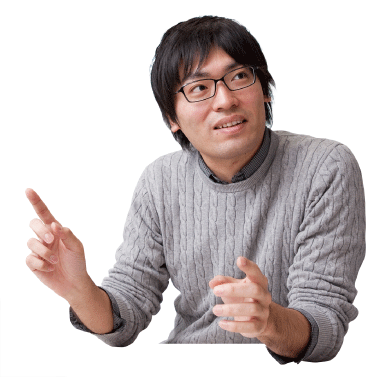
Student : Dr. Ando is still very young – 30 years old – and always deals with us friendly and attentively, putting himself in the shoes of us students. So we can approach him for advice without reserve whenever we need him. For example, if we are troubled with a research task, he is willing to think it over together through discussion to work out a good idea. The study of spintronics is quite a new field, meaning more chances of new discoveries. As such, pursuit of spintronics is really exciting as well as rewarding.
(Reporter & text writer: Madoka Tainaka)


